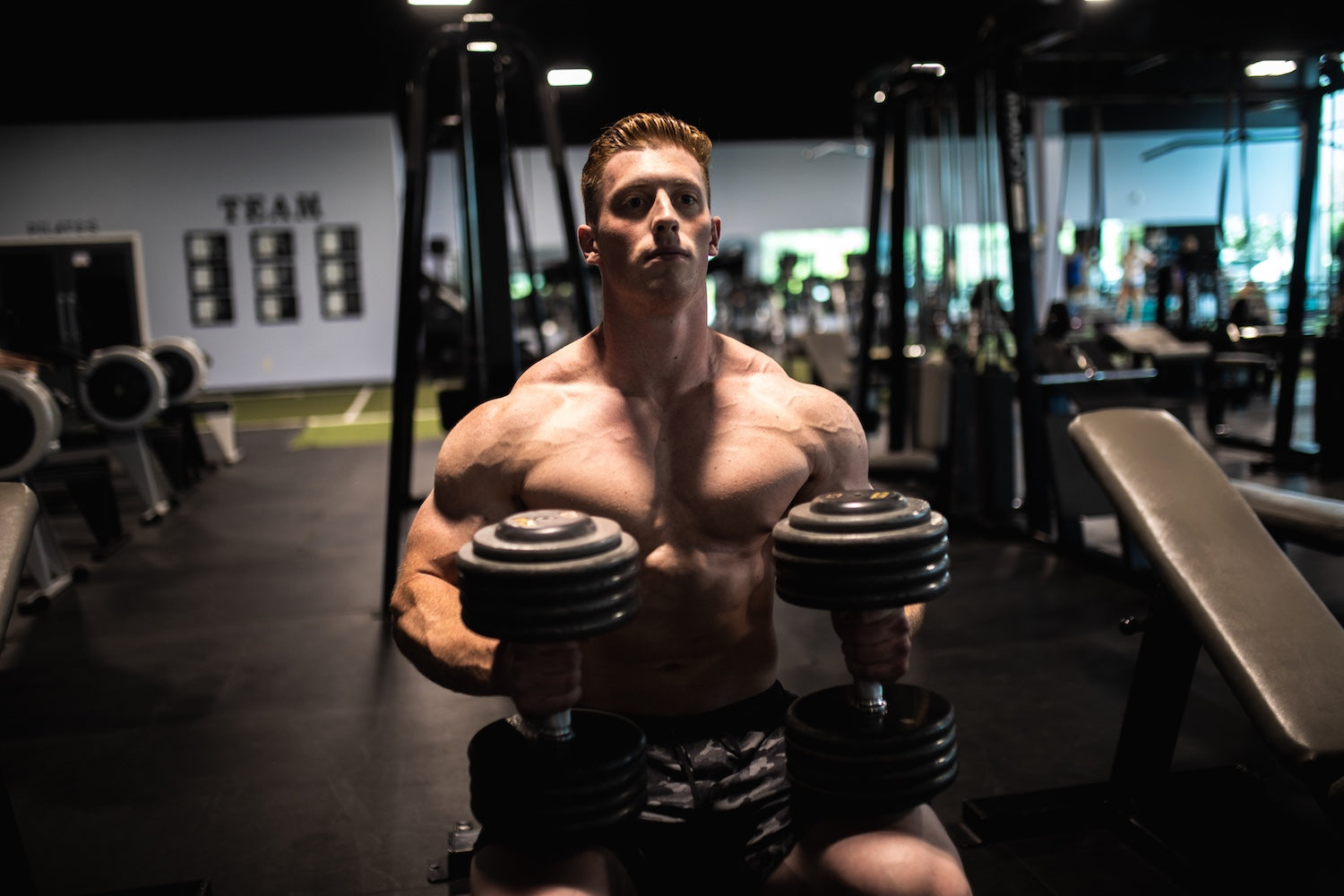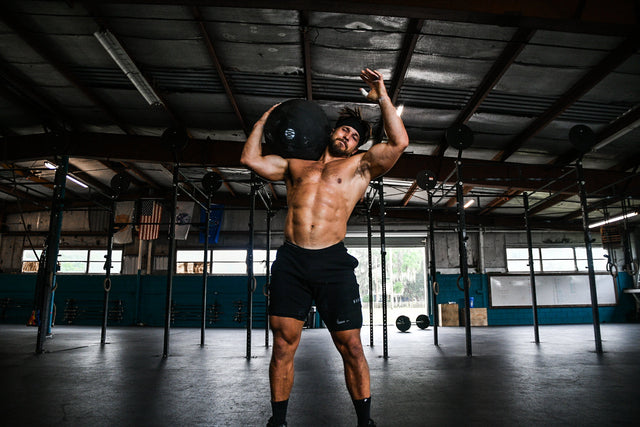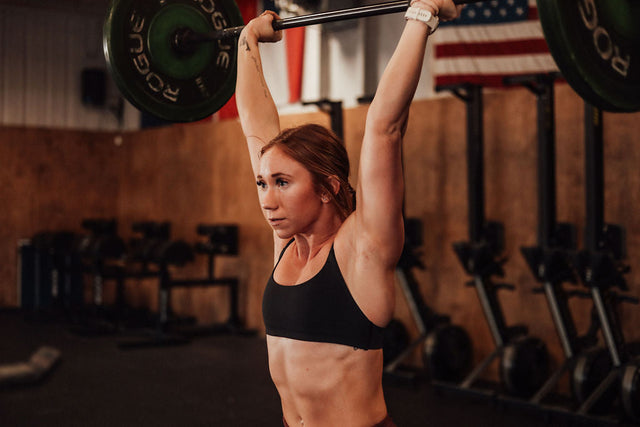In the relentless pursuit of muscle gains and peak performance, two heavyweight contenders emerge: Testosterone and Superdrol. Each powerhouse offers unique benefits, but which one reigns supreme? Testosterone, the body’s natural hormone, has long been regarded as a cornerstone of strength and vitality, driving everything from muscle growth to mood enhancement. Meanwhile, Superdrol, a potent anabolic agent, has garnered attention for its rapid muscle-building potential and impressive strength boost. In this ultimate showdown, we'll dissect their mechanisms, benefits, and drawbacks, helping you make an informed choice in your fitness journey. Whether you're a seasoned athlete or just starting out, understanding the strengths and limitations of these two titans is crucial for optimizing your results.
Join us as we delve into the intricacies of Testosterone and Superdrol, revealing which one can elevate your performance and transform your physique. Get ready to uncover what truly lies at the intersection of science and muscle!
Understanding Testosterone vs. Superdrol: Mechanisms, Benefits, and Risks
Understanding Testosterone: The Key Hormone for Muscle Growth
Testosterone is the principal male sex hormone and an anabolic steroid, playing a vital role in the development of male reproductive tissues such as the testes and prostate. It also promotes secondary sexual characteristics like increased muscle and bone mass, and the growth of body hair. Importantly, testosterone is not exclusive to men—women also produce this hormone, albeit in smaller amounts, and it influences libido, energy levels, immune function, and red blood cell production.
In the context of bodybuilding and athletic performance, testosterone is a crucial anabolic hormone. It binds to androgen receptors in muscle cells and promotes protein synthesis—a cellular process where amino acids are assembled into proteins to rebuild and grow muscle tissue. This anabolic environment supports recovery after intense training and leads to hypertrophy (muscle growth) and increased strength.
“Testosterone not only improves muscular performance but also enhances mood and energy levels, contributing to better workout consistency and motivation.” — Bhasin et al., The New England Journal of Medicine
Testosterone also stimulates the release of growth hormone, another critical factor in recovery and muscle development. With increased endurance, faster recovery, and elevated focus, testosterone is widely considered foundational to performance enhancement.
What is Superdrol? An Overview of the Anabolic Steroid
Superdrol, chemically known as methasterone (or methyldrostanolone), is an oral anabolic steroid well known for its rapid and powerful muscle-building effects. Initially developed in the 1950s, it was briefly marketed as a prohormone supplement before being banned due to its high anabolic potency and potential liver toxicity.
Structurally, Superdrol is classified as 2α,17α-dimethyl-5α-androstane-3-one-17β-ol, a modified form of dihydrotestosterone (DHT). This structure gives it a high anabolic rating with relatively low androgenic effects, allowing users to experience dramatic gains in lean muscle mass, strength, and workout performance without the bloating or estrogenic side effects of other compounds.
“Superdrol has an anabolic to androgenic ratio of 400:20, making it one of the most anabolic oral steroids available.” — Wikstrom et al., Steroids
However, its benefits come at a cost. Superdrol is hepatotoxic due to its 17-alpha-alkylated structure, which enables oral bioavailability but places a heavy burden on the liver. Because of these risks, methasterone was classified as a Schedule III controlled substance in the U.S. under the Anabolic Steroid Control Act.
Mechanisms of Action: How Testosterone and Superdrol Work
Both testosterone and Superdrol exert their effects by creating an anabolic environment, but they do so through distinct mechanisms:
How Testosterone Works
-
Androgen Receptor Binding: Testosterone binds to androgen receptors in muscle tissue, activating pathways that increase gene expression involved in protein synthesis.
-
Nitrogen Retention: It improves nitrogen balance, which is essential for muscle repair and growth.
-
Red Blood Cell Production: Testosterone boosts erythropoiesis, enhancing oxygen delivery and endurance.
-
Growth Hormone Interaction: It stimulates growth hormone and IGF-1, amplifying recovery and muscle gain.
-
Neurological Benefits: Testosterone also positively affects mood, aggression, and motivation through its impact on neurotransmitters.
“Testosterone increases muscle mass, bone density, and strength while also having neuroprotective and mood-stabilizing effects.” — Basaria et al., The Journal of Clinical Endocrinology & Metabolism
How Superdrol Works
-
High Affinity Androgen Binding: Superdrol binds to androgen receptors with greater potency than testosterone, leading to enhanced anabolic effects.
-
Protein Synthesis and Nitrogen Retention: It rapidly increases protein synthesis and retains nitrogen, fueling muscle growth and repair.
-
Glycogen Supercompensation: Users report enhanced glycogen storage in muscle cells, leading to increased muscle "fullness" and strength.
-
No Aromatization: Superdrol does not convert to estrogen, which eliminates the risk of gynecomastia and water retention but also removes the joint lubrication and mood-balancing benefits of estrogen.
“Due to its non-aromatizing nature, Superdrol offers dry, hard muscle gains but may increase joint discomfort and mood instability in some users.” — Rahman et al., Drug Testing and Analysis
Conclusion: Choosing Between Testosterone and Superdrol
Both testosterone and Superdrol are powerful anabolic agents, but they serve different roles in performance enhancement:
-
Testosterone provides a balanced and sustainable approach with benefits across physical performance, mood, and overall vitality. It is widely used in testosterone replacement therapy (TRT) and performance-enhancing cycles.
-
Superdrol offers rapid, aggressive gains in muscle mass and strength, but it comes with a higher risk profile, particularly for liver toxicity and hormonal suppression.
Ultimately, your choice should depend on your goals, experience level, and risk tolerance. Testosterone is often the safer and more versatile option, while Superdrol is better suited for short-term, aggressive muscle-building goals under carefully monitored conditions.
Testosterone vs. Superdrol: Muscle Gains and Side Effects Compared
Comparing Muscle Gains: Testosterone vs. Superdrol
When it comes to building muscle, both testosterone and Superdrol are highly effective anabolic agents—but they offer very different experiences in terms of pace, sustainability, and overall results.
Muscle Growth with Testosterone
Testosterone is well-documented for providing steady, sustainable muscle gains. Most users report gradual increases in size, density, and definition over the course of a cycle, with improvements continuing as long as proper training and nutrition are maintained. The muscle built with testosterone tends to be lean and aesthetic, with enhanced vascularity and lower water retention compared to harsher steroids.
“Testosterone promotes lean mass and muscular development with fewer short-term shocks to the body, supporting long-term physique maintenance.” — Bhasin et al., The Journal of Clinical Endocrinology & Metabolism
This slower pace appeals to athletes and bodybuilders who prioritize recovery, endurance, and consistency. Testosterone also improves mood, focus, and libido—benefits that enhance training longevity and mental resilience.
Muscle Growth with Superdrol
In contrast, Superdrol is often described as a fast-acting, high-impact compound for muscle and strength gains. Most users experience significant increases in mass and power within just 2–3 weeks, making it a favorite for last-minute pre-contest boosts or aggressive short cycles.
“Superdrol can increase lean body mass by 8–12 lbs in a 4-week cycle, though much of it may include intramuscular water and glycogen retention.” — Wikstrom et al., Steroids
However, this rapid growth may not always equate to lasting gains. Some users report post-cycle loss of size due to temporary glycogen and water storage. Additionally, the “look” achieved with Superdrol can be fuller and rounder, but not as dry or vascular as what testosterone promotes.
Summary of Muscle Gains
-
Testosterone: Slow, steady, lean gains with improved recovery and mental performance.
-
Superdrol: Rapid, dramatic gains in size and strength—but often with more water retention and a harsher side effect profile.
Your choice depends on your training timeline, tolerance for side effects, and whether you prioritize sustainable growth or short-term physical transformation.
Potential Side Effects: Risks of Using Testosterone and Superdrol
Both testosterone and Superdrol carry risks, and understanding these side effects is essential for safe and responsible use.
Testosterone Side Effects
As a bioidentical hormone, testosterone is generally well-tolerated when used at therapeutic or moderately supraphysiological doses. However, misuse or prolonged use can lead to several adverse effects:
-
Estrogenic Side Effects: Testosterone can aromatize into estrogen, potentially causing water retention, gynecomastia (male breast tissue), and mood swings.
-
Androgenic Effects: Users may experience acne, increased facial/body hair, and scalp hair thinning (especially in genetically predisposed individuals).
-
Hormonal Suppression: Exogenous testosterone suppresses natural production, which can lead to testicular atrophy, infertility, and reduced libido post-cycle.
-
Cardiovascular Strain: Elevated hematocrit, LDL cholesterol, and blood pressure may occur, increasing the risk of heart disease if unmanaged.
“Testosterone therapy can increase cardiovascular events if not monitored, particularly in older men or those with underlying risk factors.” — Basaria et al., NEJM
With responsible dosing, proper PCT (Post Cycle Therapy), and regular bloodwork, these side effects can often be managed or avoided.
Superdrol Side Effects
Superdrol is significantly more toxic and suppressive than testosterone. Its 17-alpha-alkylated structure makes it effective orally—but also highly hepatotoxic.
-
Liver Toxicity: One of the most severe concerns. Superdrol can dramatically elevate liver enzymes, potentially causing liver damage or failure, especially with prolonged use or alcohol intake.
-
Cardiovascular Risks: It may increase LDL ("bad") cholesterol, lower HDL ("good") cholesterol, and elevate blood pressure—contributing to plaque buildup and heart strain.
-
Suppression of Natural Testosterone: Like all anabolic steroids, Superdrol suppresses the HPTA axis, leading to loss of libido, mood swings, and difficulty recovering hormone levels post-cycle.
-
Other Symptoms: Fatigue, lethargy, appetite suppression, and joint pain are commonly reported.
“Methasterone has been associated with severe liver injury, with cases of jaundice and hepatic failure reported after just a few weeks of use.” — Teschke et al., Annals of Hepatology
Because of these risks, Superdrol is best reserved for experienced users with access to regular health monitoring, including liver function tests and cardiovascular assessments.
Final Thoughts: Choosing Based on Risk vs. Reward
Both compounds have a place in performance enhancement, but the decision between testosterone and Superdrol ultimately comes down to your goals and your risk tolerance:
-
Choose testosterone if you value consistency, long-term progress, and overall well-being. It’s versatile, effective, and relatively safer.
-
Choose Superdrol if you're targeting short-term, high-impact muscle and strength gains, and you're prepared to manage the elevated health risks that come with it.
In either case, always pair your cycle with support supplements, bloodwork, and a well-planned PCT protocol to protect your long-term health.
Legal Status, Availability, and Dosage Guidelines for Testosterone vs. Superdrol
Legal Status and Availability: Testosterone vs. Superdrol
The legal landscape surrounding testosterone and Superdrol varies greatly due to their intended uses, risk profiles, and regulatory classifications.
Testosterone: Prescription-Only but Legally Accessible
Testosterone is a Schedule III controlled substance in the United States under the Controlled Substances Act. While it is illegal to possess or distribute testosterone without a valid prescription, it remains widely prescribed for legitimate medical conditions such as:
-
Male hypogonadism (low testosterone levels)
-
Delayed puberty in males
-
Certain types of breast cancer in women
“Testosterone may be legally obtained via prescription and is used to treat a range of androgen deficiencies, particularly in aging males.” — Morgentaler et al., The Journal of Urology
Obtaining testosterone through a licensed provider ensures monitoring of dosage, side effects, and health markers such as hematocrit and cholesterol levels, which reduces the risk of adverse effects from misuse.
Superdrol: Banned Yet Illegally Accessible
Superdrol (methasterone) has a more convoluted history. It was initially sold as a "legal prohormone" before being identified as an unapproved anabolic steroid. In 2012, it was added to the Anabolic Steroid Control Act as a Schedule III substance, making its possession and distribution without a prescription federally illegal in the U.S.
“Superdrol was reclassified due to its potent anabolic activity and associated liver toxicity, leading to its inclusion in the Schedule III list.” — FDA, Federal Register
Despite its illegality, Superdrol remains available on the black market and through unregulated online retailers. This poses a number of dangers, including:
-
Counterfeit or contaminated products
-
Incorrect or harmful dosages
-
No quality control or oversight
The risk of serious side effects, including liver damage and cardiovascular issues, is greatly heightened when using illicit sources of Superdrol.
Recommended Dosages and Cycles for Optimal Results
To minimize risks and maximize effectiveness, both testosterone and Superdrol must be used in properly structured cycles with appropriate support and post-cycle therapy (PCT).
Testosterone Dosage & Cycle Guidelines
-
Hormone Replacement Therapy (HRT): 50–200 mg per week (under medical supervision)
-
Performance Enhancement: 200–600 mg per week
-
Cycle Length: 8 to 12 weeks
-
Administration: Intramuscular injections (e.g., testosterone enanthate or cypionate)
“Clinical and performance applications of testosterone require individualized dosing protocols, with blood work guiding adjustments.” — Saad et al., Current Opinion in Endocrinology, Diabetes & Obesity
Post-Cycle Therapy (PCT):
-
Begin 2–3 weeks after the last injection
-
Duration: 4–6 weeks
-
Common agents: Clomid (Clomiphene Citrate), Nolvadex (Tamoxifen)
-
Goal: Restart endogenous testosterone production, prevent estrogen rebound, preserve gains
Superdrol Dosage & Cycle Guidelines
-
Typical Dosage: 10–30 mg per day
-
Cycle Length: 4 to 6 weeks (due to liver toxicity)
-
Form: Oral tablets
Because of its hepatotoxicity, Superdrol should never be run longer than 6 weeks, and users should:
-
Avoid alcohol and acetaminophen
-
Use liver support supplements like:
-
N-Acetyl Cysteine (NAC)
-
Milk Thistle
-
TUDCA (Tauroursodeoxycholic acid)
-
“Hepatotoxicity is a known concern with 17α-alkylated steroids like Superdrol. Liver support and short cycles are essential to reduce long-term risk.” — Teschke et al., Drug-Induced Liver Injury Journal
PCT for Superdrol:
-
Start immediately post-cycle
-
Duration: 4–6 weeks
-
Use Clomid and/or Nolvadex to restore hormonal balance
-
Bloodwork is highly recommended 4–6 weeks post-PCT to ensure recovery
Post-Cycle Therapy (PCT) Guide: Testosterone vs. Superdrol
Why PCT Is Essential
After any anabolic steroid cycle, your body’s natural testosterone production is suppressed. Without proper PCT:
-
Natural testosterone levels may remain low for weeks or months
-
Estrogen levels can rebound, leading to side effects like gynecomastia
-
You risk losing gains and experiencing fatigue, low libido, and mood swings
A well-structured PCT helps to:
✅ Restart natural testosterone production
✅ Regulate estrogen levels
✅ Preserve muscle mass and strength
✅ Restore libido and mood stability
PCT Protocol for Testosterone Cycle
When to Start:
✅ Begin 2–3 weeks after your last testosterone injection (to allow exogenous testosterone to clear)
PCT Duration:
4–6 weeks
Medications:
-
Clomid (Clomiphene Citrate): 50 mg/day for 4 weeks
-
Nolvadex (Tamoxifen Citrate): 20 mg/day for 4 weeks (optional, or in place of Clomid)
Many use Clomid solo, but combining it with Nolvadex may improve recovery speed and prevent rebound estrogen symptoms.
Optional Support:
-
Swolverine ZMT – 6 capsules nightly
(Includes magnesium, zinc, and herbs like ashwagandha and tribulus to naturally boost testosterone, improve sleep, and manage cortisol) -
Omega-3 (Krill Oil) – For cardiovascular support and hormone regulation
-
Vitamin D3 + K2 – To support testosterone and immune health
PCT Protocol for Superdrol Cycle
When to Start:
✅ Immediately after your last dose (due to Superdrol’s short half-life and fast suppression)
PCT Duration:
4–6 weeks
Medications:
-
Clomid:
-
Week 1: 50 mg/day
-
Weeks 2–4: 25 mg/day
-
-
Nolvadex:
-
20 mg/day for 4 weeks (may run solo if avoiding Clomid)
-
Liver Support (Critical Post-Cycle):
-
Swolverine NAC (N-Acetyl Cysteine) – 600–1200 mg/day
-
TUDCA or Milk Thistle – Optional but effective for liver regeneration
“Oral methylated steroids like Superdrol are hepatotoxic, and liver recovery can take weeks. Continued use of liver-supporting compounds is recommended post-cycle.” — Teschke et al., LiverTox
Bloodwork Recommendations (Post-PCT)
Test 4–6 weeks after finishing PCT:
-
Total & Free Testosterone
-
LH & FSH (luteinizing hormone / follicle-stimulating hormone)
-
Estradiol (E2)
-
Liver enzymes (ALT/AST)
-
Lipid panel (HDL/LDL, triglycerides)
Additional Recovery Tips
-
Sleep 7–9 hours nightly
-
Eat a high-protein, nutrient-dense diet
-
Avoid alcohol or overtraining during recovery
-
Maintain a moderate training intensity (avoid PR chasing)
Sample Stack for PCT (Testosterone or Superdrol)
| Supplement | Product Example | Dose | Purpose |
|---|---|---|---|
| Clomid | Prescription only | 25–50 mg/day | Stimulates LH/FSH, boosts T levels |
| Nolvadex | Prescription only | 20 mg/day | Blocks estrogen, supports recovery |
| ZMT | Swolverine | 6 caps nightly | Natural T support & sleep recovery |
| NAC | Swolverine | 600–1200 mg/day | Liver detox & antioxidant support |
| Krill Oil | Swolverine | 2–3 softgels daily | Hormone & cardiovascular support |
| Vitamin D3 + K2 | Any quality brand | 5,000 IU D3 daily | Immune + testosterone synergy |
Final Thoughts: Legal and Safe Usage Strategies
-
Testosterone is a medically regulated substance that can be used legally and safely with a prescription and proper monitoring. It’s ideal for both therapeutic and athletic use when structured responsibly.
-
Superdrol is banned for non-medical use and should only be considered by highly experienced users due to its toxicity, legal risk, and need for advanced cycle support.
No matter the compound, maximizing safety and results requires:
-
Support supplements
-
Structured cycles
-
Regular blood testing
-
Thoughtful post-cycle therapy
Conclusion: Which Is Right for You?
Choosing between testosterone and Superdrol comes down to your individual goals, risk tolerance, and willingness to prioritize health and recovery protocols. While both compounds offer impressive anabolic benefits, they differ drastically in mechanism of action, safety profile, and long-term impact.
Why You Might Choose Testosterone
-
Natural Hormone Replacement: Testosterone mimics the body’s own hormone, making it a medically sanctioned option when prescribed.
-
Sustainable Gains: Muscle growth on testosterone is typically steady, lean, and long-lasting, especially when paired with proper training and nutrition.
-
Full-Spectrum Benefits: Beyond muscle gains, testosterone enhances libido, mood, endurance, and recovery, making it a holistic tool for long-term fitness development.
“Testosterone therapy offers consistent anabolic results with the benefit of regulated, physician-monitored use.” — Morgentaler et al., The Aging Male
Why You Might Choose Superdrol
-
Extreme Short-Term Gains: Superdrol delivers rapid increases in size and strength, often visible within just 2–3 weeks.
-
Non-Aromatizing Profile: With no conversion to estrogen, it avoids issues like gynecomastia or water retention.
-
High Anabolic Potency: It has one of the highest anabolic ratings among oral steroids, making it a potent tool for pre-competition conditioning or strength peaking.
“Superdrol’s appeal lies in its speed and intensity, though its hepatotoxic nature requires careful risk management.” — Teschke et al., Annals of Hepatology
However, Superdrol should be approached with extreme caution. Its use is best limited to experienced users with a well-established support stack and access to regular bloodwork monitoring.
Final Word: Make an Informed, Health-Conscious Decision
-
If you're seeking a balanced, long-term solution for building muscle and enhancing performance—testosterone is likely the better choice.
-
If your goal is fast, dramatic results and you're prepared to accept the greater health risks and complexity of cycle management—Superdrol may fit that niche.
Whichever you choose, the following principles are non-negotiable:
-
Use responsibly
-
Support with proper supplements (e.g., NAC, liver support, ZMT)
-
Run complete post-cycle therapy (PCT)
-
Get regular lab work to track your health
Find similar articles:
Anabolics






